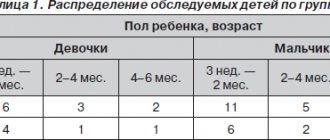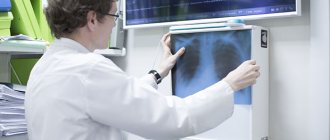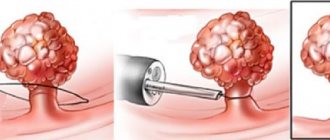It is logical to assume that increased gas formation (flatulence) is a consequence of excess gas, which begins to accumulate in the intestines. More than half of all people with various diseases of the gastrointestinal tract (GIT) experience signs of increased gas formation in the intestines on an ongoing basis1.
Most people can eliminate flatulence, but you will have to make an effort and figure out which remedies are most effective. To do this, it is necessary to understand the processes of occurrence and accumulation of gases in the intestines.
Digestion, enzymes and gases
The causes of increased gas formation in the intestines in adults and children are inseparably linked with the process of digestion in the gastrointestinal tract (GIT). The digestion process is tied to two types of food processing - mechanical and chemical. The formation of gases refers specifically to chemical processes.
Dry statistics show that a healthy gastrointestinal tract should contain no more than 200 ml of various gases. In fact, this is rare, especially in modern life. Already with a gas volume of more than 200 ml, we can talk about the development of flatulence.
The digestion process involves all parts of the gastrointestinal tract and therefore a malfunction in any of them can lead to the appearance of unpleasant symptoms. Increased gas formation is associated with disorders in the intestines, because the main stage of digestion and assimilation of food occurs there. One of the most common causes of gas or flatulence is a lack of enzymes. Enzymes are protein molecules produced primarily by the pancreas that are the body's main chemical tool for processing and assimilating food. Enzymes speed up the breakdown of nutrients such as carbohydrates, proteins and fats. If there is a lack of enzymes, the body cannot cope with the digestion of food, and therefore many nutrients are not absorbed. Digestion worsens, the fermentation process begins in the intestines with the production of gases2,3.
Bacteria also get down to business and are also not averse to replenishing the intestines with gases. It's no secret that the human intestines are full of bacteria - useful and not so good. Together they form the intestinal microflora.
The task of microflora is to help process and absorb food, improve immune function, protect the intestines from infections, absorb vitamins and much more. The vital activity of bacteria results in the production of gases - nitrogen, carbon dioxide, hydrogen and methane. If the number of bacteria does not exceed the norm, then the gases do not affect the functioning of the intestines and do not cause discomfort. However, when digestive problems begin due to a lack of enzymes, ideal conditions for growth are created for bacteria. The number of bacteria increases, as do the gases they produce3.
The gases themselves can not only bloat the stomach, cause discomfort after eating, pain and a feeling of heaviness, but also directly affect the functioning of the entire gastrointestinal tract (GIT). Changes in the rhythm of the intestines lead to stool disorders, which are often manifested by diarrhea.
Having found out that bacteria are the main producers of gas, and the probable cause is indigestion due to a lack of its own enzymes, it is worth thinking about restoring the optimal level of enzymes.
Flatulence and bloating
Symptoms of flatulence
Flatulence itself is a symptom of intestinal dysfunction. Therefore, it is more correct to talk not about the symptoms of flatulence (bloating), but about the sensations that may accompany it. So, with flatulence in adults, the following are most often observed:
- bubbling and rumbling;
- feeling of heaviness and fullness in the stomach;
- cramping pain1.
Causes of flatulence
Flatulence is a fairly common phenomenon that can occur even in healthy people. For example, when consuming certain foods or having a tendency to overeat. Remember, there are situations when a long period of time passes between meals. And when you finally have the opportunity to eat, you want to eat more so that the long-awaited feeling of fullness comes sooner. It is at such moments that you may encounter a feeling of fullness in the abdomen caused by increased gas formation.
If discomfort begins to bother you regularly and it is not possible to associate it with specific situations, then a symptom such as flatulence, or bloating, may indicate a disruption in the functioning of the intestines. In this case, you should listen more carefully to your body.
Flatulence can be one of the symptoms of a problem such as Irritable Bowel Syndrome (IBS). This name combines a complex of symptoms with which the body tries to attract our attention: abdominal pain, stool disorders (constipation, diarrhea or their alternation), bloating and increased gas formation1.
Irritable intestines are a consequence of a busy lifestyle with frequent stress, fatigue and emotional overload, as well as dietary errors and snacks on the go. Another reason may be previous intestinal infections when the intestines have not fully recovered3.
Thus, the cause of bloating (flatulence) in IBS is a malfunction of the intestines. With IBS, flatulence, or bloating, often occurs along with constipation. This is due to the fact that food is “locked” in the intestines, which provokes fermentation processes and, as a result, the release of gases2.
So, flatulence can occur as an independent symptom after taking certain foods or meals. However, if flatulence occurs regularly and is accompanied by abdominal pain or bowel irregularities, this may indicate that the intestines are irritated.
How to treat flatulence in adults?
Treatment of flatulence is determined depending on the cause of this symptom.
If increased gas formation is the body’s response to foods, then it is important to reconsider your diet and diet.
One of the most important stages in the treatment of flatulence is diet6. In order to eliminate excess gas formation, it is worth thinking about useful habits:
- for some time, remove legumes, sweet and flour products, carbonated drinks, raw vegetables and fruits from the diet;
- give preference to fermented milk products, crumbly porridges, boiled meat, wholemeal bread;
- adhere to fractional meals (eating in small portions every 2-3 hours);
- maintain a drinking regime (drink at least 1.5 liters of clean water per day);
- don't overeat at night3.
If the appearance of bloating (flatulence) is associated with Irritable Bowel Syndrome, then treatment of gas formation requires an integrated approach. Just following a diet to normalize work will not be enough, since the problem has been developing for a long time. Quickly accustoming yourself to a new diet is not easy. A remedy for restoring intestinal function will be a good helper.
Antifoaming drugs, which are usually used to treat flatulence, may also not be enough. Such drugs help relieve the symptom here and now, but they will not be able to restore functional impairment. In order for the problem of flatulence to be resolved naturally, time and a suitable drug are needed to train the intestines to work correctly4.
Flatulence Remedy for Irritable Bowel Syndrome
The drug Duspatalin® 135 mg was created specifically for the treatment of irritable bowels. Thanks to a special mechanism of action, the drug helps not only relieve pain, but also restore its function5. This allows you to control symptoms such as pain and spasms, bloating, gas formation and stool disorders: diarrhea or constipation when taking a course of 28 days7.
You can read more about Duspatalin® 135 mg tablets here5.
Symptoms of gas formation in the intestines due to a lack of enzymes
Increased gas formation in the intestines against the background of impaired digestion has clear symptoms. Many symptoms are quite obvious4:
- bloating - a distended abdomen is the most obvious sign of increased gas formation, often accompanied by heaviness after eating;
- seething and rumbling in the stomach is the “loudest” symptom that can occur at the wrong moment and can be heard by people around you;
- belching and hiccups - frequent and severe belching is a direct symptom, also applies to hiccups;
- diarrhea and constipation - due to a lack of enzymes, diarrhea is more common due to insufficient quality of fat processing;
- discomfort and pain in the abdomen.
Prevention and treatment of increased gas formation in the intestines
Treatment, as well as prevention of the causes of severe gas formation in the intestines, may include general recommendations, therapeutic measures and the use of effective medications.
The main preventive measures that can reduce the amount of gas in the abdomen are based on excluding certain types of foods from the menu. Such products stimulate the production of gases and aggravate the problem4:
- fatty, spicy and salty foods;
- legumes;
- fiber (dietary fiber) in large quantities;
- carbohydrates (especially bakery products);
- carbonated drinks;
- some specific products are cocoa, nuts, apples, eggs, cabbage and radishes.
In addition to reviewing your diet and diet, it is important to follow simple recommendations: when chewing food, your mouth should be closed - this reduces the penetration of air through the external environment and prevents the development of belching. After eating, the gastrointestinal tract should be given time to process the received energy4.
If we are talking about the use of medications, then it is important to understand that it is important to work with the cause, then gas formation will decrease as a consequence. You can buy quick-acting tablets or other medications at your local pharmacy. An example is defoamers, which interact with gas particles and destroy them. Such drugs do provide relief, but they do not cope with the cause of the unpleasant condition. In more than half of cases, the cause of increased gas formation in the intestines is digestive problems and a lack of digestive enzymes2,5.
Medicines that help cope with this cause are pancreatin enzyme preparations. Their active ingredient is pancreatin, which contains three important enzymes - amylase, lipase and protease. Each of these enzymes helps digest a specific food component: amylase - carbohydrates, lipase - fats, protease - proteins. Thanks to this, enzymes improve the digestion of food, which helps eliminate the cause of increased gas formation5. It is especially important to help break down fats, since if there is a lack of enzymes, their digestion suffers the most.
Creon® is a reliable remedy for improving digestion, but with unique features.
The main feature of Creon® is its release form - capsules, which contain small particles of pancreatin - minimicrospheres. Today, minimicrospheres are the latest word in the evolution of enzyme preparations and are produced using a patented technology that is improved compared to other known production methods6. Thanks to the unique release form, Creon® begins to work within 15 minutes after entering the intestines, helping to eliminate heaviness after eating, abdominal discomfort, bloating, and flatulence7.
The soluble capsule gives Creon® minimicrospheres additional protection from the destructive environment of the stomach8. In the stomach, the capsule quickly dissolves, and the minimicrospheres are evenly distributed throughout the entire volume of food, subsequently easily reaching the intestines with it.
Flatulence: norm and pathology
The human gastrointestinal tract, in addition to solid and liquid components, contains a gaseous component in quite significant volumes. Intestinal gases are distributed in a more or less dense mass of chyme and are enclosed in bubbles of various sizes coated with mucus. Increased gas content in the intestines and associated clinical disorders are included in the concept of “flatulence”. An increase in the volume of intestinal gases can lead to symptoms that cause the patient very noticeable discomfort in the form of a feeling of fullness in the abdomen, rumbling and pain. An enlarged abdomen and increased passing of gas may also be observed. Severe flatulence can disrupt a person’s normal lifestyle, significantly affect his mental state, and lead to restlessness, anxiety and even depression. In children of the first year of life, flatulence can lead to disruption of the child’s sleep and nutrition, and affect psychomotor and physical development.
Normally, the intestines of an adult contain about 200 ml of various gases. The composition of these gases is very variable: they include nitrogen (11–92%), oxygen (up to 11%), carbon dioxide (up to 50%), hydrogen (up to 10%), methane (up to 60%), hydrogen sulfide (up to thirty%). ammonia and some others.
A relatively large proportion of gases enter the intestines during swallowing, including nitrogen, oxygen and carbon dioxide. Increased gas in the intestines may be associated with increased swallowing of air (aerophagia) during meals, which is facilitated by rushed eating, talking while eating, drinking through a straw, and chewing gum. A large amount of carbon dioxide enters the gastrointestinal tract with carbonated drinks. Some carbon dioxide may be formed in the stomach as a result of the reaction of food carbonates with hydrochloric acid in the gastric contents. In children in the first months of life, swallowing increased volumes of air during feeding is often observed and is associated with insufficient maturity of the nervous system and an incompletely formed swallowing reflex (especially in premature and immature children at the time of birth), which can cause regurgitation and even excessive vomiting only what food was eaten. Perinatal disorders of the central nervous system also contribute to dyskinesia of the digestive organs, one of the manifestations of which may be aerophagia. In this regard, in order for excess air to escape from the stomach without taking its contents with it, it is recommended that infants be kept in an upright position for some time after feeding. Aerophagia, caused by dietary habits, is relatively physiological and can be fairly easily corrected. At the same time, aerophagia as a symptom of a serious disease of the nervous system and/or digestive organs may require both serious examination and long-term treatment.
Most of the gases from the stomach enter the intestines along with food.
The second important source of intestinal gases is the metabolic activity of intestinal microorganisms, most actively present in the colon. The saccharolytic microflora that predominates in the intestine under normal conditions largely utilizes carbohydrates that are not digested and not absorbed in the small intestine for their energy needs. First of all, we are talking about dietary fiber and some oligo- and disaccharides. As a result of fermentation processes, the microbe receives ATP, and its environment (i.e., intestinal contents) receives a number of metabolites, including gaseous ones.
Thus, as a result of homofermentative lactic acid fermentation, characteristic of lactobacilli and streptococci of the colon, lactic acid (up to 90%), carbon dioxide, hydrogen, and water are predominantly formed. Heterofermentative lactic acid fermentation, in which, in addition to lactic acid, other metabolites (including acetic acid) are formed, is characteristic of bifidobacteria. Alcoholic fermentation, leading to the formation of carbon dioxide and ethanol, is a side metabolic pathway in some representatives of lactobacilli and clostridia. Certain strains of Escherichia coli and clostridia obtain energy as a result of formic acid, propionic acid, butyric acid, acetone butyl or homoacetate types of fermentation. In this case, volatile fatty acids, carbon dioxide, hydrogen and water are formed during all fermentation options. Organic acids are utilized by macroorganisms, carbon dioxide is largely converted by other microorganisms into acetate, hydrogen is mainly absorbed and excreted through the lungs. Increased excretion of hydrogen with exhaled air is observed with an increase in the microbial population or with an increase in its saccharolytic activity, for example, with lactase deficiency.
Methane can form in small quantities in the intestines. Its presence in intestinal gases indicates the presence of Methanobrevibacter smithii in the intestinal microbiocenosis. Microbial metabolism of sulfur-containing compounds, primarily proteins (in particular, mucus proteins) causes the presence of hydrogen sulfide, but its high concentrations are associated with excessive activity of the proteolytic flora, often as a result of disruption of the processes of digestion and absorption in the small intestine and the entry of undigested proteins into the large intestine . Also, as a result of microbial metabolism of proteins, ammonia is formed, which easily diffuses through the intestinal wall into the blood of the portal system and is mainly retained by the liver. Normal intestinal microflora helps reduce the diffusion of ammonia into the blood by lowering the pH in the lumen of the colon, as a result of which ammonia is ionized to form ammonium ions, which are bound into salts and excreted in the feces.
Finally, some gases enter the intestinal lumen from the blood, but their volumes are relatively small.
The gas contained in the intestines is mainly evacuated through the anus, although some of it is absorbed into the blood and excreted through the lungs or utilized by the body. A healthy adult person excretes 0.2–2.5 liters of gases per ani during 5–15 passages per day [1, 2].
The main reason for the increased content of gases in the intestines is the increased metabolic activity of the intestinal microflora. Among the physiological reasons for this phenomenon, it should be noted the consumption of fiber-rich foods of plant origin, as well as raisins, beans, peas, black bread, kvass, and beer. Gas formation also increases in many pathological conditions that lead to disruption of the composition of the intestinal microbiocenosis.
An increased content of gases in the intestines leads to intestinal distension, thereby stimulating peristalsis, causing pain symptoms. At the same time, there is no clear correlation between the content of gases in the intestines and the clinical manifestations of flatulence, which is associated with significant individual variability in interoreception. In patients with a low response threshold of intestinal interoceptors, a pronounced clinical picture can be observed with minor gas formation, and in individuals with a high response threshold, complaints are not noted even with significant gas formation in the colon [3, 4].
Changes in the composition of the intestinal microbiocenosis and, as a consequence, the development of flatulence can be facilitated by disruption of the processes of digestion and absorption, as well as changes in intestinal motility. Essentially, with almost any disease of the digestive system, intestinal dysbiosis and flatulence can be observed as a manifestation of the latter.
A common cause of flatulence is lactase deficiency, an intolerance to the milk sugar lactose resulting from a deficiency of the small intestinal enzyme lactase. Normally, lactase breaks down milk sugar into glucose and galactose, which are absorbed into the blood in the small intestine, but with lactase deficiency, milk sugar is not broken down and reaches the colon unchanged, where it is utilized by microorganisms with an increase in gas production. In this regard, one of the tests to detect lactase deficiency is to determine the increased concentration of hydrogen in exhaled air. In addition, undigested lactose in the colon stimulates the secretion of water, which causes the development of loose, foamy stools with a sour odor. All of these symptoms occur only when consuming dairy products containing lactose, primarily whole milk. Fermented milk products contain less milk sugar and can be eaten with a slight decrease in lactase activity. Cottage cheese and cottage cheese do not contain lactose, and their consumption does not cause symptoms. Lactase deficiency can be primary, associated with the genetic characteristics of the individual and inherited, and secondary, that is, arising against the background of diseases of the small intestine, as well as constitutional. The latter is due to the fact that in some people (clinically healthy!) lactase activity in the small intestine decreases with age and they no longer tolerate dairy products. This process can begin as early as the second half of the first year of life and is not considered pathological. There are entire regions and continents in the world (for example, Africa), the adult population of which does not tolerate milk sugar.
Another common cause of flatulence is irritable bowel syndrome (IBS), which is manifested by a combination of abdominal pain with a change in bowel habits and/or flatulence. IBS refers to a group of functional disorders of the digestive system, in which the nervous and/or humoral regulation of gastrointestinal motility is impaired, and organic intestinal pathology is not detected. One of the causes of IBS may be a disorder of the intestinal nervous system, expressed in a decrease in the sensitivity threshold of intestinal interoreceptors. Clinical signs in favor of IBS include variability and diversity of complaints, lack of progression, normal weight, increased complaints during stress, absence of symptoms at night, and association with other functional disorders. Most often, pain occurs before defecation and goes away after it.
The main clinical manifestations of IBS include abdominal pain or discomfort for at least 3 months of the last year, which is relieved by bowel movements, accompanied by changes in stool frequency (more than 3 times a day or less than 3 times a week) and/or shape. stool (either hard, dry lumps - like “sheep feces”, or unformed - mushy). In addition to the main ones, there are also additional symptoms: difficulty in defecation or a feeling of incomplete emptying of the rectum, copious mucus secretion, rumbling or bloating.
Based on the nature of stool, there are three main clinical variants of IBS: IBS with pain and flatulence; IBS with constipation; IBS with diarrhea. Flatulence can be observed with any type of IBS, but is most pronounced with the first.
The cause of flatulence in IBS is a violation of intestinal motility, which leads to a change in the composition of the intestinal contents and, as a consequence, the composition of the intestinal microflora. Under certain conditions, the gas-forming activity of the latter increases, which clinically manifests itself in the form of flatulence [3, 4]. On the other hand, it has been shown that the reason for the development of the feeling of “bloating” in the abdomen in IBS may be not only and not so much increased gas filling of the intestines, but a slowdown in intestinal motility. One of the reasons for this slowdown may be a violation of the reflex regulation of motility at the level of the intestinal nervous system, in particular, a violation of the intestinal distension reflex [5, 6].
To effectively eliminate flatulence, you need to understand the reason that causes it. Very often, flatulence is associated with the patient’s dietary habits and regimen, which in most cases can be eliminated. In this regard, regular nutritious meals in a calm environment should be recommended. It is advisable to include Activia probiotic fermented milk products in the diet. Their regular use helps restore the composition and metabolic activity of intestinal microflora, as well as normalize intestinal motor function [9]. In controlled clinical studies, it was shown that regular consumption of these products for 14 days was accompanied by a decrease in the severity of bloating, flatulence, and the appearance of regular (at least 6 times a week) independent bowel movements [10]. The amount of gas-forming products must be selected individually. When gastrointestinal diseases are detected, these diseases should be treated first. The diet for flatulence is determined by the underlying pathological process. In case of lactase deficiency, it is mandatory to follow a lactose-free or low-lactose diet with the exclusion or reduction of milk sugar in the diet. For children of the first year, in this case, low-lactose milk formulas or special lactase preparations should be used. In case of IBS with flatulence, the amount of products of plant origin should be temporarily reduced, it is necessary to consult with a neurologist and psychologist, and antispasmodics can be used as a symptomatic remedy to eliminate pain (in older children and adults, for example, Duspatalin).
In order to correct the composition of the intestinal microflora, the administration of probiotics is indicated - preparations containing live microorganisms that have a positive effect on the microbial balance of the intestine. These preparations may contain Lactobacillus acidophilus, Lactobacillus GG, Lactobacillus fermentum, Streptococcus (Enterococcus) faecium SF68, S. termophilus, Bifidobacterium bifidum, for which the probiotic effect has been proven in double placebo-controlled studies. It is desirable that the strains of microorganisms included in the preparations have antibiotic resistance and are protected from acidic gastric contents. On the other hand, correction of intestinal microbiocenosis can be effectively carried out with prebiotic drugs, the most common component of which is lactulose (Duphalac). Low doses of lactulose help restore intestinal microflora in case of intestinal dysbiosis of various origins, by stimulating the growth of “own” microflora. Doses of the drug Duphalac are selected individually and vary depending on age, and can be divided into two doses (table). In real practice, the combined use of pre- and probiotics is often used.
As an additional means to eliminate the symptom of flatulence and alleviate the patient’s condition, preparations containing simethicone, a mixture of dimethsiloxane polymer with silicon dioxide, have been widely used for many years. Simethicone is insoluble in water, quickly spreads across the media interface and displaces foaming agents from the surface layer of the film. At the same time, it destroys the membranes of gas bubbles in the intestinal contents and promotes the removal of gases from the intestines. Simethicone quickly and effectively eliminates signs of increased gas filling in the intestines, has no side effects and no age restrictions. The effectiveness and safety of simethicone has been proven in a number of studies, and drugs based on it are recommended for use in many conditions accompanied by flatulence, in particular, in functional disorders [7, 8]. Since in almost all cases of flatulence there are disturbances in the digestive processes, it is advisable to combine simethicone with pancreatic enzymes, which significantly increases the effectiveness of eliminating flatulence. Enzymatic drugs can be prescribed independently (for example, Creon) or as part of drugs combined with simethicone (Pankreoflat).
The positive effect of pancreatic enzymes is due to an improvement in digestion processes, which is reflected in the functional state of the intestinal microflora and a decrease in the entry into the colon of underdigested, in particular, gas-forming components. The use of microspherical preparations (Creon) turns out to be more effective compared to conventional tablet preparations, firstly, due to the high degree of activity of the original substrate (pancreatin), and secondly, the special dosage form of the drug (microspheres 1–1.2 mm in size) , ensuring uniform mixing with gastric contents; thirdly, a pH-sensitive shell of microspheres, protecting the enzyme from destruction in the stomach and ensuring its maximum release in the duodenum [10–13].
Creon should be taken with meals. The dose is selected individually, the daily dose depends on the severity of exocrine pancreatic insufficiency. In pediatric practice, to make it easier to take the drug, the capsule can be carefully opened and the microspheres can be taken without chewing, with a small amount of water. If microspheres are mixed with food, they should be taken immediately after mixing; otherwise, damage to the enteric coating may occur.
Thus, increased gas formation can be associated with a wide variety of reasons and, therefore, the approach to correcting this condition should be strictly individual. In general, the main directions of this correction are diet therapy, treatment of the underlying disease (if one is identified), correction of microbiocenosis and symptomatic therapy with the inclusion of drugs containing simethicone.
For questions regarding literature, please contact the editor.
A. A. Kovalenko , Candidate of Medical Sciences T. V. Gasilina , Candidate of Medical Sciences S. V. Belmer , Doctor of Medical Sciences, Professor of the Russian State Medical University , Moscow










